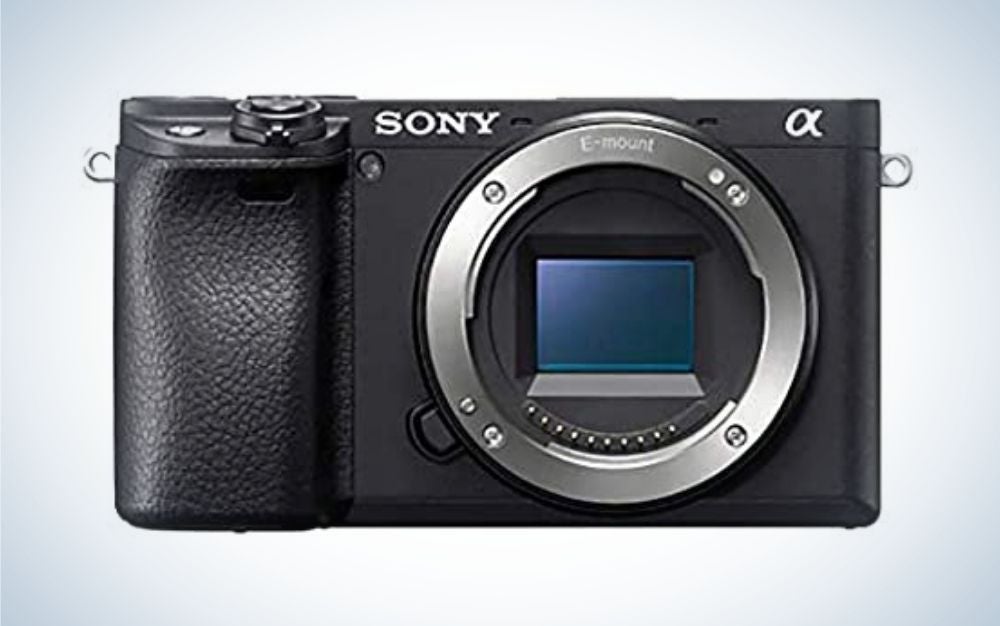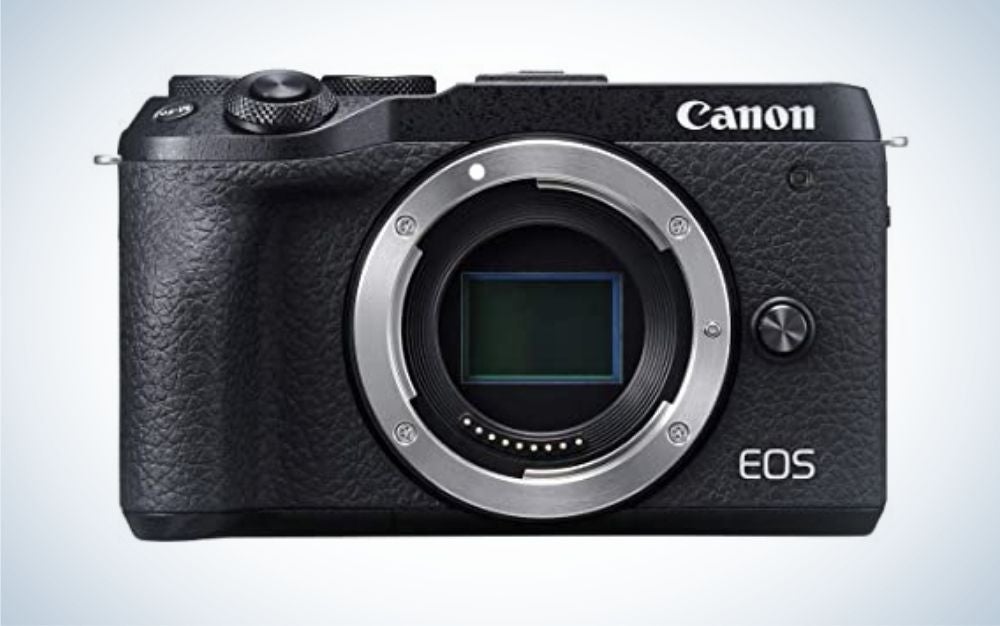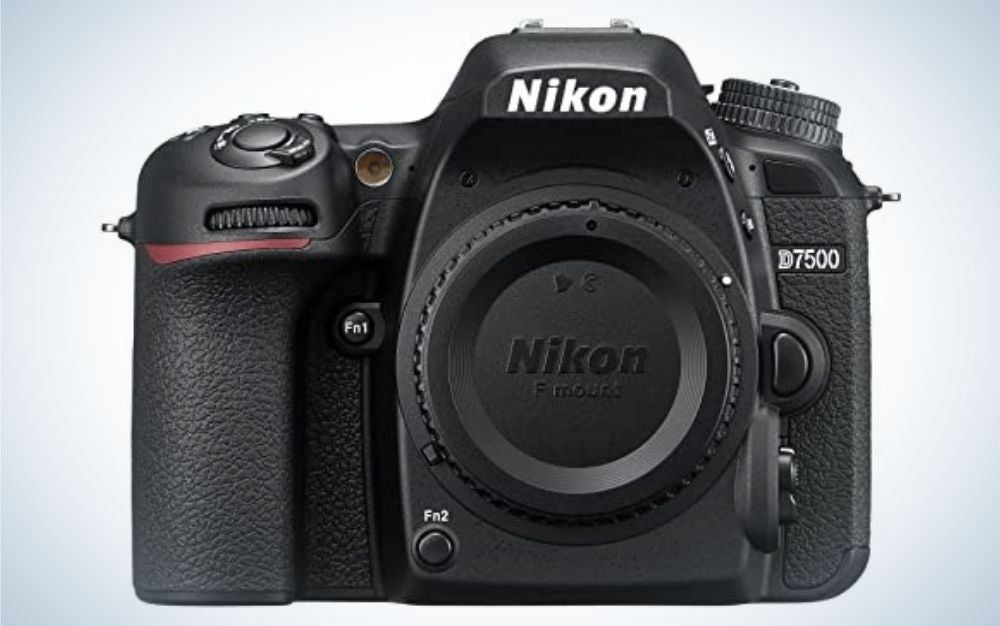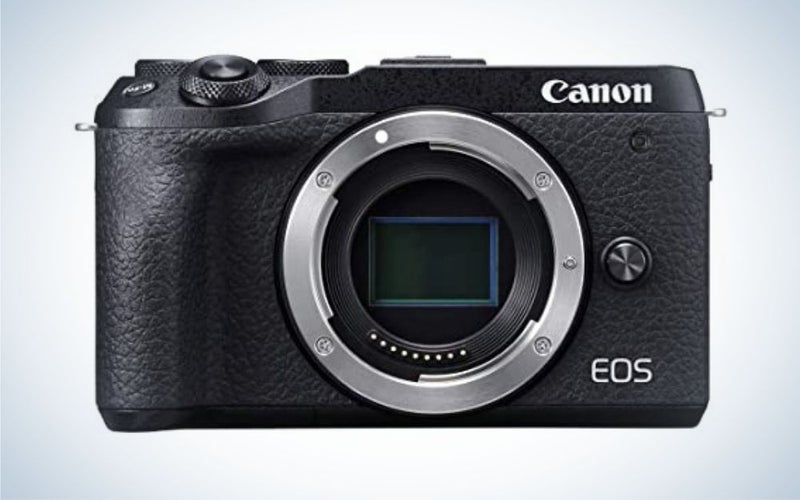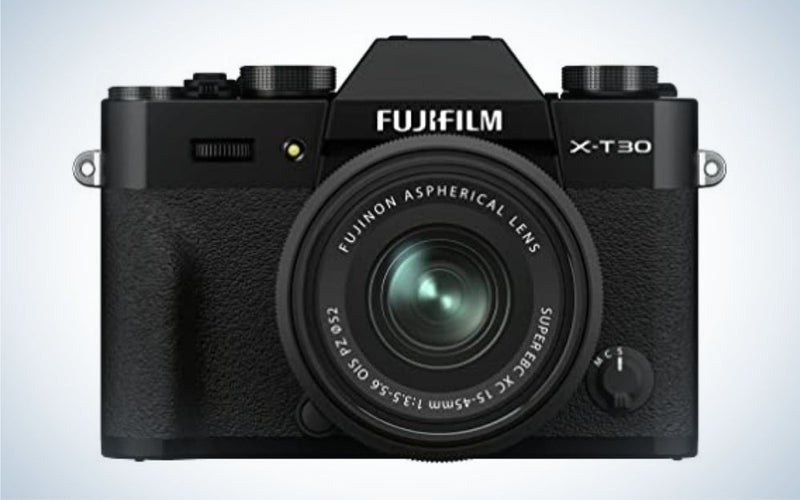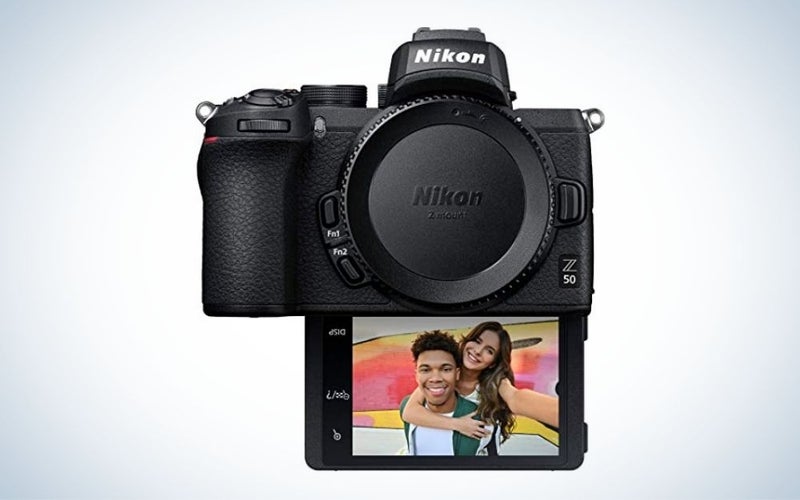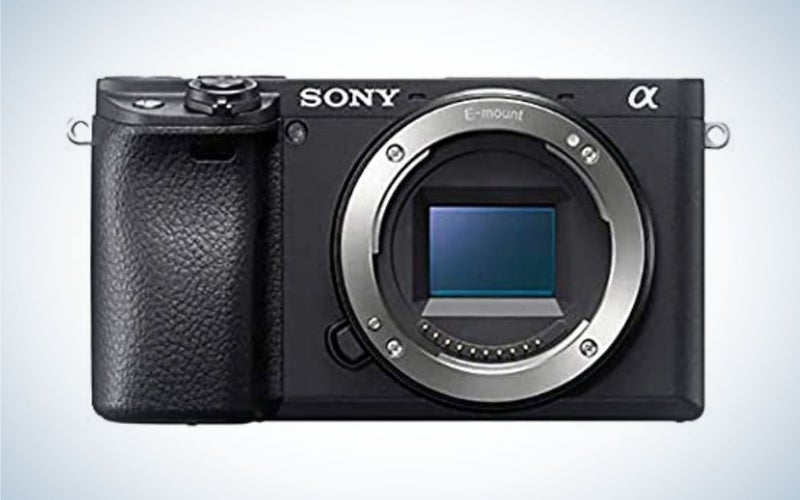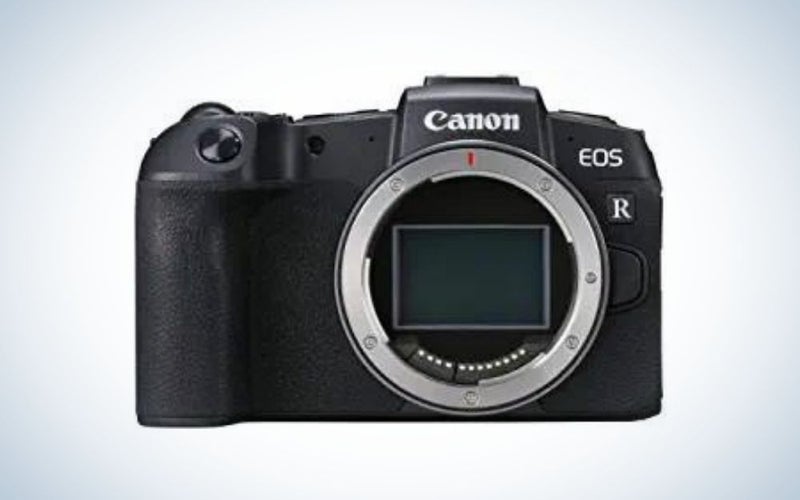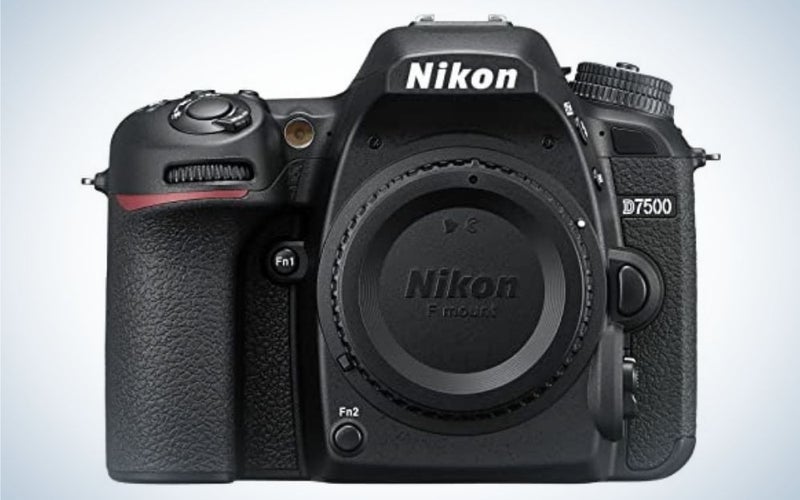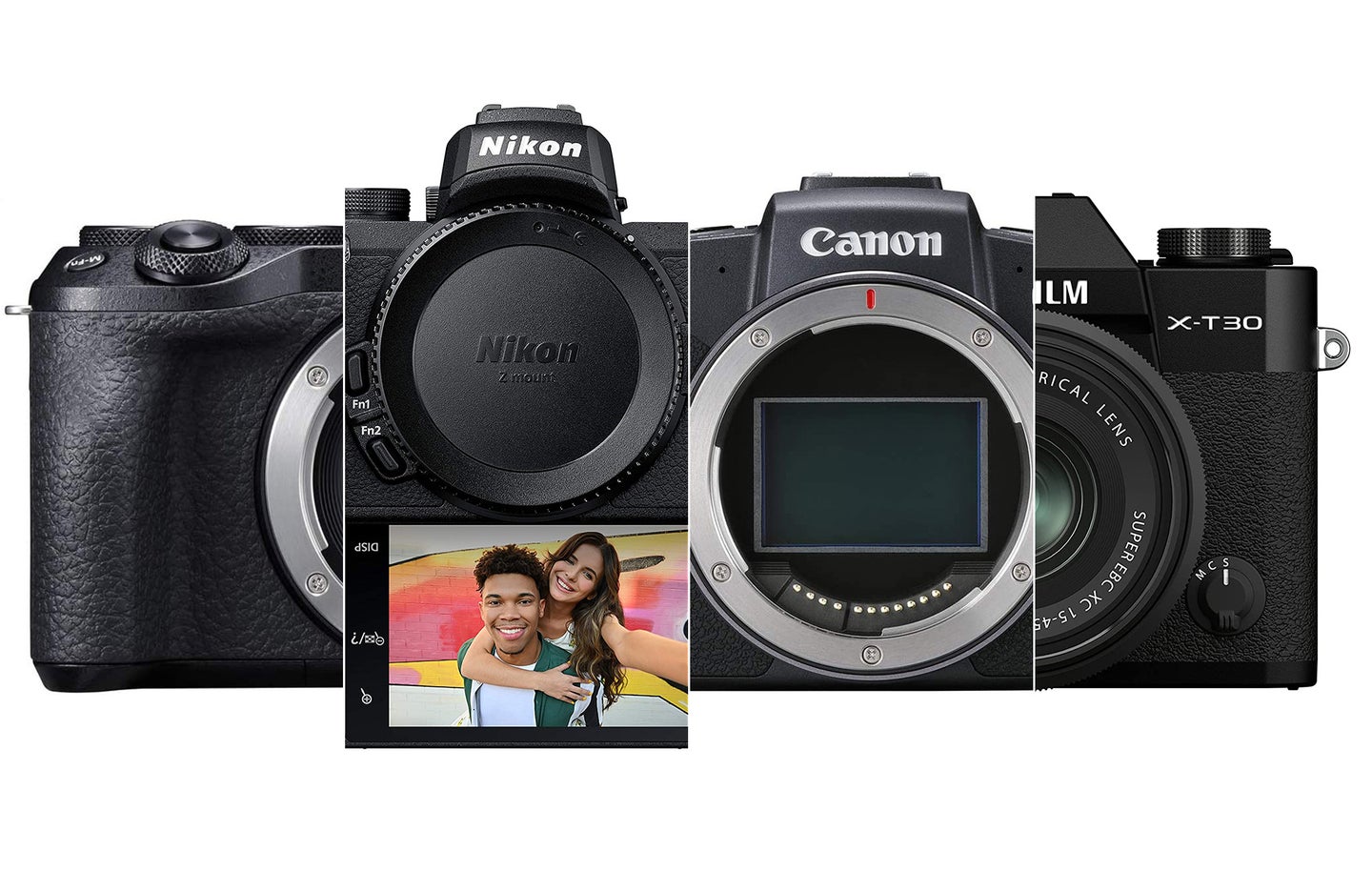
While flagship cameras that cost as much as a used car are fun to dream about, there are plenty of cameras under $1000 that can help you create great photography. Maybe you’re ready to upgrade from your entry-level DSLR. Or perhaps you’ve finally mastered manual mode and want a camera with a few more features. It’s time to level up, but searching for the best upgrade can feel daunting as you figure out what features you need as you attempt to balance quality, specs, and price. Mirrorless or DSLR? Compact or full-frame? Is it possible to find a full-frame without breaking the budget. This list of the best cameras under $1,000 offers up both mirrorless and DSLR options, with some models even including a lens for that price.
- Best overall: Fujifilm X-T30 II
- Best mirrorless: Sony a6400
- Best full-frame: Canon EOS RP
- Best for Youtube videos: Nikon Z50
- Best Canon: Canon EOS M6 II
- Best DSLR: Nikon D7500
Things to consider while shopping for the best cameras under $1,000
Before digging into our specific recommendations, we’ll outline some specific terms and features you’ll find out there in this space. Understanding these features will help you narrow down the picks to your specific needs.
Mirrorless vs. DSLR
Mirrorless cameras have taken over for DSLRs atop the camera market and it looks like it’s going to be that way for the foreseeable future. With companies dedicating their resources to developing mirrorless tech and pretty much halting DSLR development, shiny, new, and updated means mirrorless is the way to go. From the Sony a6400 to the Nikon z50, the options are robust and produce high-quality images, while also bringing other features to the table, depending on your pick.
However, that doesn’t mean you can’t choose DSLRs. Because the systems are more established, there are a host of options on the second-hand market, meaning you could come away with a camera (and potentially a lens) comfortably under $1,000. And even if you upgrade down the road, those DSLR lenses typically adapt easily to to their mirrorless counterparts.
Resolution
For the hobbyist and serious enthusiast (and even a professional), 24-megapixels is more than plenty. And, if you’re a video creator, you’ll do just fine at 20-megapixels if you choose the Nikon Z50. Should you want even more resolution at this price point, consider the Canon EOS M6 II’s 32.5-megapixels.
Full-frame vs. crop sensor
At this price point, the majority of your options will be a crop sensor, which means the sensor is considerably smaller than its full-frame counterparts. That doesn’t mean these APS-C cameras won’t deliver. However, do keep in mind that crop sensors often have fewer choices in the lens department. Even if they are compatible with lenses built for full-frame cameras, there will be a crop factor of 1.5x, which you’ll need to bear in mind when selecting new glass. Wide-angle lenses won’t feel so wide on the APS-C sensors.
Brand
While Canon produces the best full-frame camera under $1,000 (Canon EOS RP), our all-around pick as the best camera under $1,000 is the Fujifilm X-T30 II. However, before buying a camera, be sure to assess what you’ll need from your equipment. A video content creator will be much better off with the Nikon Z50, while someone who enjoys a more point-and-shoot style camera should probably pick the Sony a6400. Once you buy into a specific camera brand, you’ll want to buy lenses that fit that mount down the road. So, it’s important to check your lens options before diving into a new camera system.
Our picks for the best cameras under $1,000
With some of the important terms and features outlined above, it’s time to break down our specific picks for the best cameras under $1,000. While we’ve outlined some specific categories for each of these cameras, it’s worth noting that there’s absolutely some overlap here. Peruse all the options to see which one fits your specific needs before jumping into a purchase.
Best Canon: Canon EOS M6 II
Canon
Why it made the cut: This affordable camera is very compact, but feature-rich.
Specs:
- Resolution: 32.5MP
- Sensor size: 22.3 x 14.9 mm (APS-C) CMOS
- Lens mount: EF-M mount
- Weight: 14.3 oz
Pros:
- Good value for the features
- Excellent image quality and color
- Reliable Eye AF performance
- 14 fps burst shooting
- Built-in flash
- Well-built, comfortable controls
- Great (relatively affordable) primes available: 22mm, 32mm, 28mm…plus a variety of zooms and an adapter that allows compatibility with EF and EF-S lenses
Cons:
- Poor 4K video quality
- Battery life is lacking
- No viewfinder. Lens converter is expensive.
The Canon EOS M6 II has the best resolution at 32.5MP and produces excellent JPEGs with accurate autofocus and 5,481 focus points. While it’s not as customizable as some of its high-end counterparts like the Canon R5 it offers a very solid selection for its pricepoint. It can shoot up to 14fps but lacks a viewfinder for those who prefer one, though, you can purchase an accessory finder that plugs into the camera’s accessory shoe for eye-level shooting. For video shooters, it can capture 4K footage, but the overall video image quality isn’t very impressive compared to some of its competitors.
Best overall: Fujifilm X-T30 II
Fujifilm
Why it made the cut: It borrows lots of features from its more-expensive siblings, which leads to overachieving in both shooting experience and image quality.
Specs:
- Resolution: 26.1MP
- Sensor size: 23.5 x 15.6 mm (APS-C) CMOS
- Lens mount: Fujifilm X
- Weight: 12.8 ounces
Pros:
- Excellent image quality and color
- Lens + body for under $1k
- 20 fps burst shooting
- Good quality 4K video
- Retro design and film simulation modes.
- Lots of controls and dials, menu easy to navigate via touchscreen or joystick, and plenty of custom menu options
- Well-built
- 20+ lenses to choose from
Cons:
- Screen only tilts & awkward tripod mount. So not really a videographer’s camera.
- 10-minute record limit on 4K capture
- Face detect not always reliable
At 26.1MP, this camera is the highest-resolution option that comes with a lens for under $1,000. The retro, DSLR-style design is a fun touch that offers plenty of tactile controls in the form of customizable buttons. It produces great JPEGS and offers film simulation modes for flair. Fujifilm’s X-series lenses work seamlessly with the rest of its X-series cameras, so upgrading your camera down the line will still give you native access to all your glass. It shoots solid video and offers weather sealing and ruggedness that are both better than you might expect for a model at this price.
If you want to save a little money, however, do note that there are no life-changing upgrades from the X-T30 so that camera remains a solid option, too.
Best for Youtube videos: Nikon Z50
Nikon
Specs:
- Resolution: 20.9-megapixels
- Sensor size: APS-C
- Lens mount: Nikon Z
- Weight: 13.93 oz
Pros:
- Excellent image quality and color
- Good low light performance
- Built-in flash (but it is small), all dials on right side for easy access w/ 1 hand.
- 11 fps burst shooting
- Small, light, well-built, good ergonomics
- Good 4K video quality (no crop, 30 min recording)
Cons:
- AF tracking occasionally gets confused
- Not many lenses when compared w/ Sony a6400 and X-T30. Though it takes the Z mount, all but three are made for full-frame.
- 180º screen – the tripod mount goes right thru it
The Nikon Z50’s touchscreen display flips around to face the front of the camera, which comes in very handy when you’re trying to shoot vlogs or walk-and-talk videos. The camera captures 4K video at up to 30 fps and it can shoot 1080p video in up to 120 fps slow-motion.
Those solid video chops accompany 20.9 megapixels of still shooting firepower. The DSLR-style design has a built-in eye-level viewfinder, so it doesn’t require an accessory finder if that’s your desired shooting setup. Overall, it’s a very solid camera for hybrid shooters and you can get a lens, too, for under $1,000 total.
Best mirrorless: Sony a6400
Sony
Why it made the cut: Fast AF and excellent image quality in a small package make this what mirrorless was made for.
Specs:
- Resolution: 24.2MP
- Sensor size: 23.5 x 15.6 mm (APS-C) CMOS
- Lens mount: Sony E
- Weight: 14.22 ounces
Pros:
- Very good image quality
- Best in class AF performance including eye detection
- Screen flips up 180º, so good for vlogging.
- Good 4K video quality (no crop, 30 min recording)
- 11 fps burst shooting
- Built-in flash
- Compact, lightweight design
Cons:
- Lacks control points
- Setting up autofocus can be confusing (lots of options)
- Known to have a slow response time to commands
- No separate photo/video exposures
This camera has the best autofocus, hands-down, at this price point and produces great photos and videos. Even though it has an APS-C sensor inside, it offers advanced AF tracking modes that can help lock onto subjects and keep them sharp as they move around the scene.
It shoots 4K video at up to 30 fps and has a built-in, high-resolution, eye-level viewfinder despite its compact size. Sony has really expanded its line of E-mount lenses in recent years, and even this-party manufacturers like Tamron and Sigma have turned out some excellent APS-C glass for Sony cameras in recent years. You can get an A6400 body and lens for under $1,000.
Best full-frame: Canon EOS RP
Canon
Why it made the cut: You’ll have a hard time finding a full-frame camera for this low price.
Specs:
- Resolution: 26.2-megapixels
- Sensor size: 35.9 x 24 mm (Full-Frame) CMOS
- Lens mount: Canon RF
- Weight: 1.07 pounds
Pros:
- Great out of camera JPEGs
- Good autofocus performance
- Lightest Canon full-frame and one of smallest and lightest out there
- Well built, comfortable ergonomics
- Great touchscreen that also flips out
- Affordable as far as full-frame goes
Cons:
- Battery life is short – around 250 shots
- Poor 4k quality with underperforming autofocus and significant crop
- Somewhat noisy Raw files (compared to FF competition)
- Slow burst speed (4 fps w/ AF)
- No kit lens
This is a compact full-frame mirrorless camera for under $1,000 with an excellent lens selection and 26.2-megapixel sensor. It offers comfortable ergonomics, an electronic viewfinder, accurate autofocus, and pleasing JPEGs. While its 4fps burst rate isn’t anything to write home about, it’s a great camera for portraits, landscapes, and everyday shooting.
This was part of Canon’s first wave of full-frame mirrorless cameras, so the RP can’t quite compete with higher-end models like the R6, but it does offer similar ergonomics and image quality. Since it has a full-frame sensor, it can also take full advantage of Canon’s increasingly impressive line of RF mount lenses, which is plans to expand considerably in the future.
If you’re planning to shoot a lot of video, the RP may not be your best bet as it can shoot 4K, but only with a very heavy grop.
Best DSLR: Nikon D7500
Nikon
Why it made the cut: This mid-range DSLR offers advanced controls and tons of affordable lens options, including a bunch of excellent older glass from the secondary market.
Specs:
- Resolution: 20.9
- Sensor size: APS-C CMOS
- Lens mount: Nikon F
- Weight: 1.41 pounds
Pros:
- 8fps/good for action photography
- 51 focus points and reliable, incredibly accurate AF to track movement with 3D tracking feature
- Performs well in low-light conditions
- Plenty of controls, solidly built, easy to customize
- Tilting LCD touchscreen makes navigation easy
- Produces accurate skin tones, excellent dynamic range
- Large lens selection
Cons:
- Poor video quality with 1.5x crop and noisy, jumpy AF
- No dual card slot
- Heaviest option
The lone DSLR on this list, the Nikon D7500 has a few features that help it hold its own. It is the sole option here with an optical viewfinder. That translates into zero lag in the viewfinder and drastically improved overall battery life compared to mirrorless. While the z50 is a good Nikon mirrorless option, those who appreciate the feel of a DSLR will enjoy the D7500, which is also probably the toughest-built camera on this list.
This camera still offers plenty of features and excellent image quality that will make it relevant and viable for years to come.
FAQs
Q: What camera has the best quality?
All of the recommended cameras will produce great images. The full-frame Canon EOS RP has the largest sensor, and so will likely provide the best quality, followed by the eoS M6 II. However, 24-megapixels is usually sufficient for a wide range of applications, and our overall pick, the Fuji X-T30 II, comes in just a tad higher at 26.1-megapixels.
Also keep in mind that “quality” doesn’t just mean megapixels or a full-frame vs. crop sensor. Other characteristics can affect your decision based on what you’re shooting. The Canon EOS M6 II might be the megapixel winner, but someone who shoots a lot of video will find it “poor quality” because 4k video isn’t its strong suit. That person would find the Nikon Z50, at just over 20-megapixels, a much better choice, along with the Sony a6400.
Q: How many megapixels is good for a camera?
Don’t get caught up in the megapixel race. Astoundingly, very few megapixels are actually required to print an image at 4×6. So, unless you’re planning to blow up your photos on wall-to-wall canvases, you probably don’t need as many megapixels as you think, especially if you’re not going to edit much.
In general, 24-megapixels is good for a camera—and in the case of our recommended Nikon Z50, 20 is just fine. People who should consider going for more megapixels are astrophotographers, artists printing their work on large scale, and anyone who wants a lot of latitude in post-production.
Q: Which is the best DSLR for beginners?
According to our editors, the best DSLR for beginners is the Nikon D3500. It’s got plenty of lens options, 24.2-megapixels on an APS-C sensor, and is built for social sharing.
Q: Are mirrorless cameras cheaper than DSLRs?
With regards to this list of best cameras under $1,000, the mirrorless cameras are, in most cases, cheaper than our recommended DSLR, the Nikon D7500.
Keep in mind, though, that many factors will influence price, and as you continue your research, you may find more inexpensive DSLR options than mirrorless, and vice versa.
Q: What cameras do YouTubers use?
If you need a camera for YouTube and other video content creation, we recommend the Nikon Z50. It will produce good-quality 4k video without a crop, and you’re not limited to 30 minutes of footage at a time. The flip-down screen makes it handy for vlogging on the go.
Final thoughts on the best cameras under $1,000
Ultimately, the best camera under $1,000 is the one that checks all the boxes for the content you want to create. If you want to create film-inspired street photography, your camera pick will be different from the budding YouTuber looking for a camera with high-quality video.
It’s easy to have FOMO—and worse, Gear Acquisition Syndrome. Buying a camera that ticks every single box feels safe. But it will also cost you. Plus, if you’re devoting all your time to creating photos or videos that you enjoy, then you won’t miss the features that are less important, and that’s where it’s okay to compromise, saying yes to great features that’ll help you achieve amazing results, and not worrying about the lacking features that you’ll never use anyway.
Methodology
To compile this list, we extensively researched cameras from all major brands, evaluating them on the same criteria: image quality, autofocusing capabilities, ergonomics, video features, speed, lens selection, and value for the dollar.
We also leaned on hands-on experience. This article was edited by the News and Features Editor, who has used every camera recommended and reviewed several of them.
The post Best cameras under $1000 in 2022 appeared first on Popular Photography.
